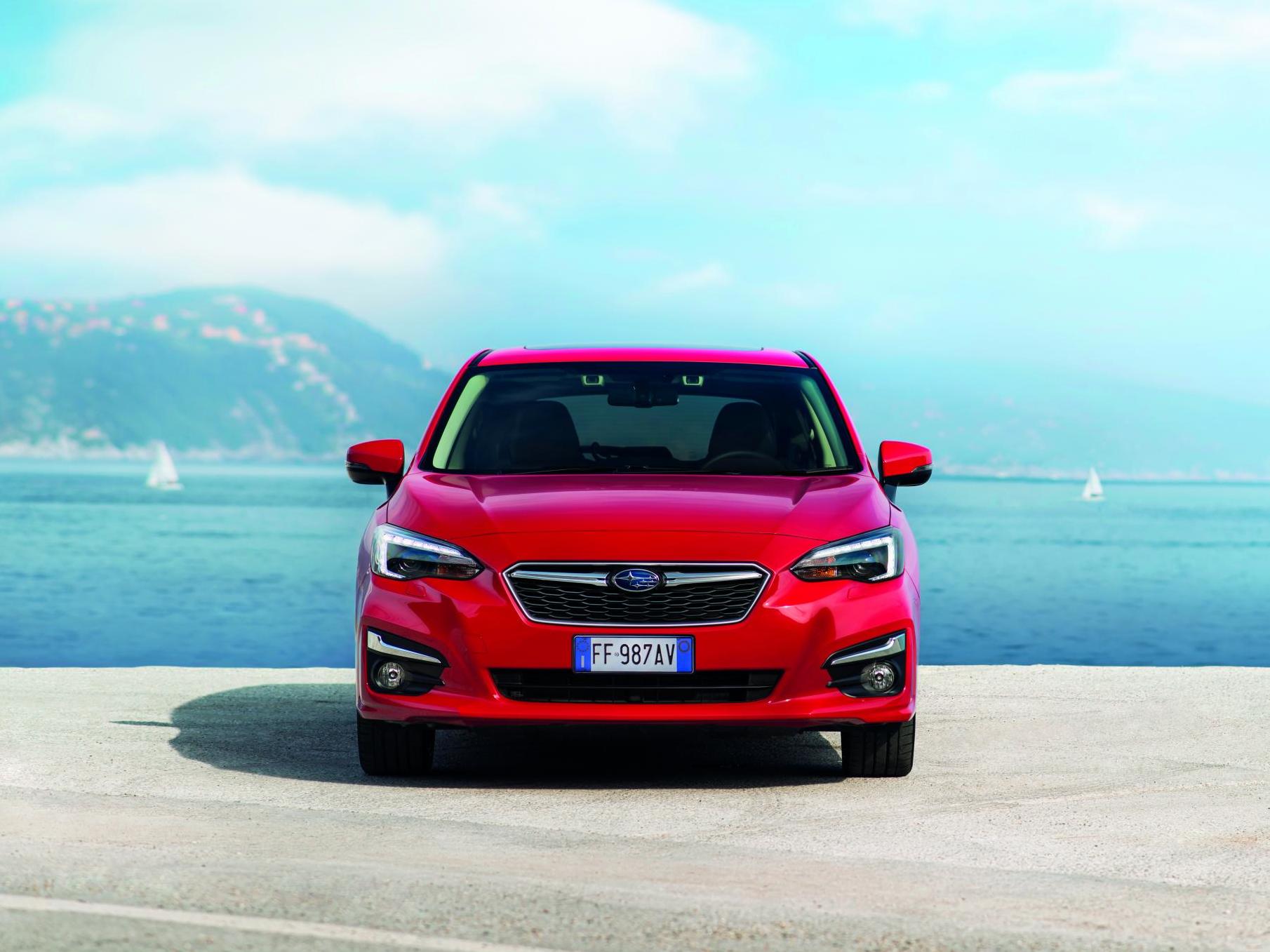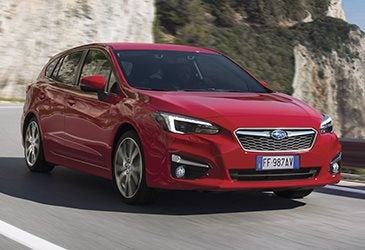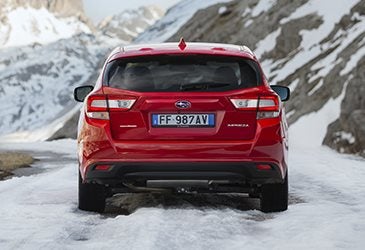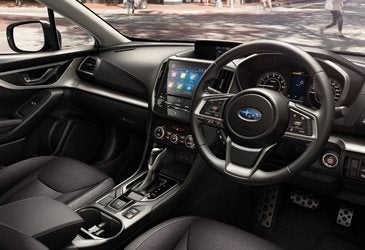Subaru Impreza review: Unique engineering in a fine driver's car
The ‘boxer’ engine helps it punch above its weight

Your support helps us to tell the story
From reproductive rights to climate change to Big Tech, The Independent is on the ground when the story is developing. Whether it's investigating the financials of Elon Musk's pro-Trump PAC or producing our latest documentary, 'The A Word', which shines a light on the American women fighting for reproductive rights, we know how important it is to parse out the facts from the messaging.
At such a critical moment in US history, we need reporters on the ground. Your donation allows us to keep sending journalists to speak to both sides of the story.
The Independent is trusted by Americans across the entire political spectrum. And unlike many other quality news outlets, we choose not to lock Americans out of our reporting and analysis with paywalls. We believe quality journalism should be available to everyone, paid for by those who can afford it.
Your support makes all the difference.Car companies like to make a “halo car”, a special, usually faster and better-equipped version to “top” a mainstream model or range of models.
This they do, sometimes, also because motoring journalists beg them to do so, so they can have something “interesting” to try out.
Nothing wrong with that, though I’d always advise car makers to ignore what hacks advise them to do (see Jaguar S-type) because it won’t stop them slagging the thing off at the unveiling and for the entire production run (see Jaguar S-type).

Usually the halo car is supposed to sprinkle a little stardust over the less glamorous models in a range. Thus, the astonishingly accomplished BMW M5 is supposed to make drivers of a BMW 530 believe that they’re only a little bit away from a four-door supercar (well, about £40,000).
There have been lots of others over the years. A few at random: the Peugeot RCZ, Honda NSX, Daihatsu Charade GTi, VW Golf GTi, Renault 12 Gordini, Peugeot 205 GTi, Seat Leon Cupra, the Kia Stinger, Rover 75 V8, MG Montego, Mini Cooper (old and new), the Maybach, Lotus-tweaked Fords, Talbots and Vauxhalls, Audi Quattro and the Fiat-based Abarth models. A mixed bag/garage, then. Sometimes, as with VW Group’s Golf GTi and the Quattro, you end up with a legendary sub-brand that bestows glamour on the entire company (and even protection from the reputational depredations of “dieselgate”). Almost all, interestingly, became instant classics.

Any road up: Subaru. Now, that brand enjoyed a considerable halo effect with its long-standing Impreza WRX Sti model, the one that kept winning all the rallies and which, if you’ve ever been lucky enough to get behind the wheel of one, you’ll agree was one of the most fun cars on the market. I think the Essex Police “interceptors” used these machines for a while just for a laugh and to make the criminals envious. Lucky coppers.
The Impreza WRX enjoyed global stature, stonking performance and a distinctive lairiness with its gold wheels, giant spoilers and azure paintwork. Whatever a bigger and better version of a halo was, that was it.
The spec
Subaru Impreza 2.0i SE Lineartronic
Price: £25,560 (as tested)
Engine capacity: 2.0 litre petrol 4-cyl, CVT auto, AWD
Power output (PS @ rpm): 156 @ 6,000
Top speed (mph): 127
0-60mph (seconds): 9.8
Fuel economy (mpg): 42.8
CO2 emissions (g/km): 152
The problem for Subaru is that the halo eclipsed, if that is the right expression, the rest of the Impreza range and indeed every other Subaru. Thus, when I told people who bothered to ask that I was trying out a Subaru Impreza, their faces visibly crumpled when I added, peremptorily, that it was a “cooking” version. They were even more downhearted when I told them that while Subaru still manufacture a WRX version of this latest generation Impreza, that one is no longer imported into the UK (its extravagant emissions being the snag).
So, while successive generations of the Impreza WRX added great lustre to the Subaru badge, its disappearance leaves people thinking there’s nothing worth considering any more. This is unfair. Every Impreza was good, you see, because every Impreza had a boxer engine and four-wheel drive, and still does, uniquely so.
That was why the Impreza had such an edge in rallying – Subaru’s rather special engineering. The firm has long favoured the boxer layout, as, with varying degrees of enthusiasm, have the likes of Porsche and Alfa – sporty names all. In a “boxer” the pistons move like counter-punches against each other, rather than up-and-down, hence the name.

The boxer design is inherently light, smooth and powerful, and being flat can sit lower under the bonnet than a more upright conventional engine. It also plugs straight into the transmission, rather than having to be mounted sideways, for example, so helping make the most of its power (fewer components in the transmission meaning less lost power along the way to the tyres).
The Impreza also still boasts a clever all-wheel drive system that’s a match for anyone else’s, Audi included, with a default 60-40 ratio of power delivery in favour of the rear, but which varies with road conditions and driver inputs.
The smoothness of the engine, especially in the larger capacity 2.0-litre petrol-engined version (there’s also a 1.6, but that’s all, so no diesels) largely compensates for the unsatisfactory constant velocity automatic gearbox, which doesn’t entirely eliminate the usual problem with them, which is putting your foot down and waiting for something, anything, to happen. Even Subaru can’t make a CVT work as well as a more conventional torque converter.

Obviously the grip is excellent and the car just feels planted and wieldy. All the power you need is there and will, mostly, be delivered promptly. If you’re in the countryside then so much the better, the all-wheel drive system, though there’s not much ground clearance.
The Impreza, then, is simply a great driver’s car, if you can remember that concept, and adds in traditional Japanese build integrity and reliability as well. It is certainly a niche product, but there’s nothing wrong with that.
Styling-wise it’s as conservative as the oily bits are novel, and it has something of the air of a contemporary Toyota or Lexus about it, including the rear light clusters which jut out of the waistline. That may have something to do with Subaru’s growing closeness to that giant, as Toyota builds a stake in Subaru’s parent, Fuji Heavy Industries.
The interior is perfectly acceptable but lags behind, say Volvo or Peugeot, for design flair and usability. It also lacks a built-in satnav system, which I guess is because it is brought into the UK by a trading group rather than the company itself. Some of the graphics are also a little dated.
So we miss the WRX version of the Impreza, but this most enchanting of family hatches is still around and still offering something different in the auto ecosystem. I don’t mind polishing its halo.
Join our commenting forum
Join thought-provoking conversations, follow other Independent readers and see their replies
Comments